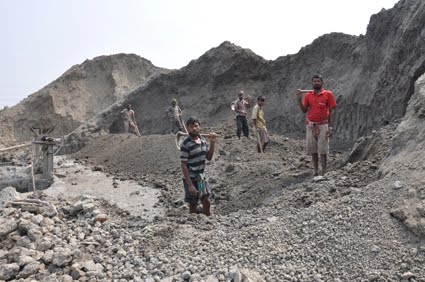l've seen a selection of artisans and craftspeople from across Dhaka and the sourrounding areas, not all of them, but the ones that are important to Britto artists and their working practice. I haven't been taken to the national monuments nor other regular tourist attractions, Instead I have been shown what makes the Britto artists tick and what they enjoy about Bangladesh and Dhaka, a very personal sense of place. Today was about a shared experience fueled by a interest in the craft of making, a respect for craft workers and their skills at working with materials.
We headed out towards Dhamrai and turned off the main road when we spotted a chimney . Riaz asked the owner if it was ok for us to have a look around, he agreed and we began a journey of discovery that was more than either of us had expected. We got lost in the process of brick making and firing. The sounds and the rhythm of the work, the patterns, the processes. I came away with an high regard for the skill, hard work and team work involved in making bricks.
I had seen images of the brick fields by Ayesha Vellani in an exhibition of photography at the Whitechapel Art Gallery, London. I had also caught glimpses of them on the flight as we came into land at Dhaka and on the earlier trip to see the metal casting at Dhamrai.






































 Limited natural rock resources results in a use for the bricks damaged during the making and firing process. They are crushed by hand using a hammer to form graded aggregates - small chippings of different sizes which are used in concrete,or as a base for roads.
Limited natural rock resources results in a use for the bricks damaged during the making and firing process. They are crushed by hand using a hammer to form graded aggregates - small chippings of different sizes which are used in concrete,or as a base for roads.




















